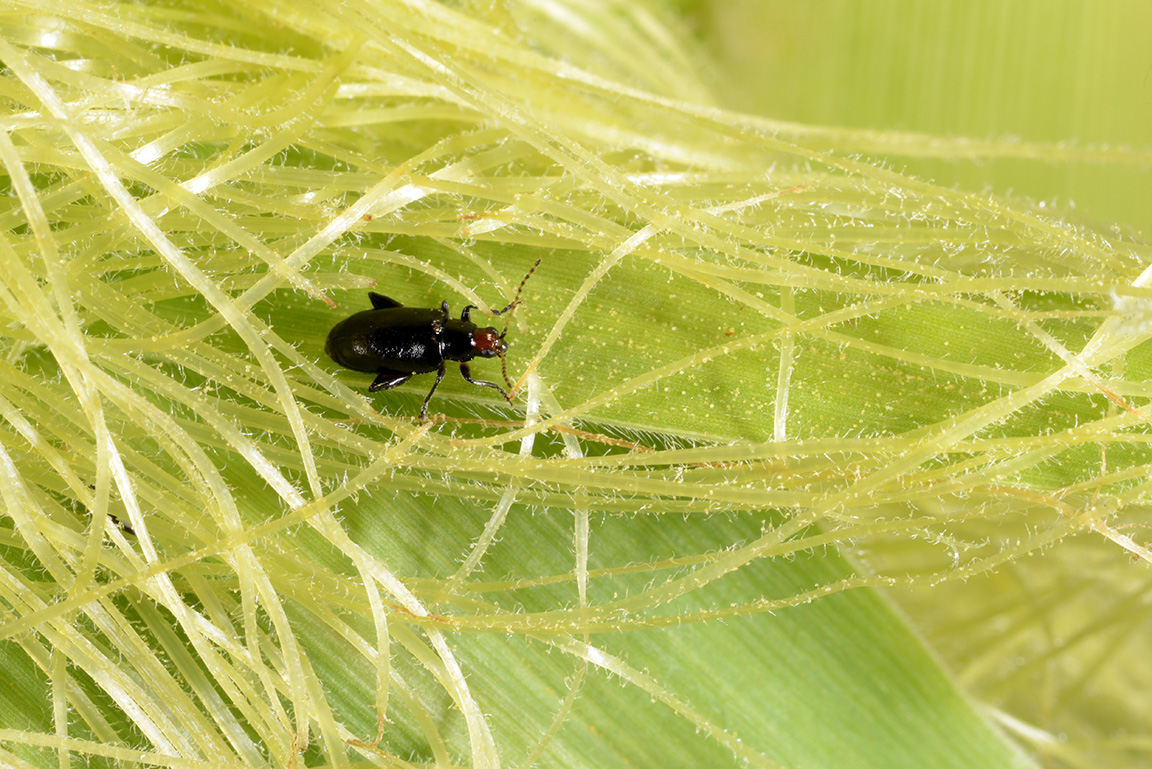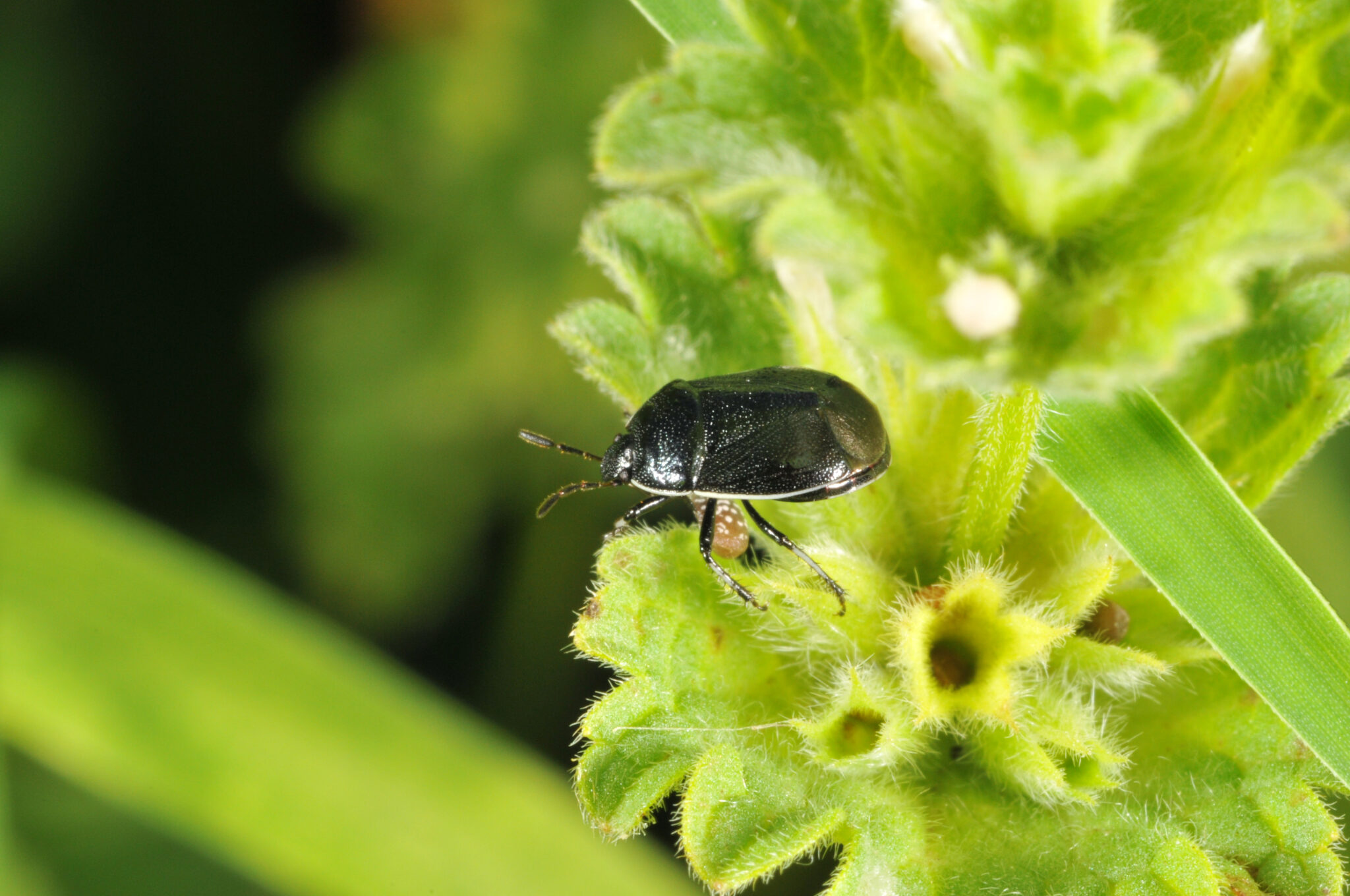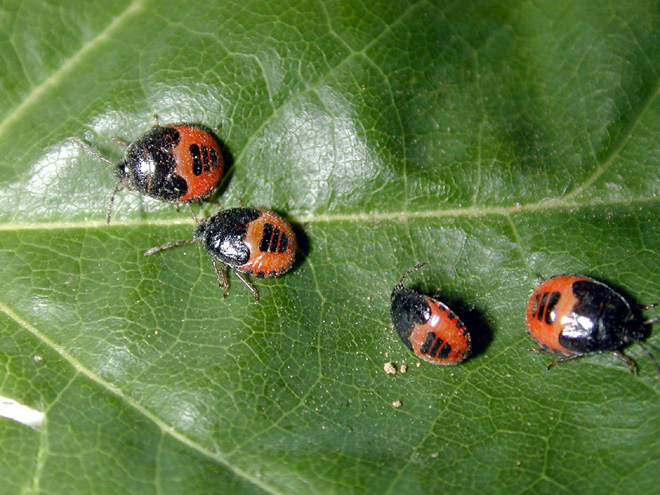Though more of a curiosity, and it is infrequent, it is refreshing for us to receive calls/emails of mysterious and perhaps terrifying insects “threatening” the crop. These are insects that can’t be found in the Corn & Soybean Field Guide. Occasionally, when weed control is delayed in fields, previously unseen insects that were feeding on weeds will switch diets and begin damaging crops. Almost always in isolated and previously weedy areas of the field, these infestations are short-lived. Interestingly, two of the three stories shared below have happened just this past week.
The redheaded flea beetle has been observed feeding on corn leaves and silks, as well as soybean foliage. The redheaded flea beetle (Systena frontalis) normally feeds on weed species, especially giant ragweed. When weeds are burned down the beetles look no further than the crop for food and will feed on leaves to a small extent. Plants near the field edge where non-crop plants will also be damaged, one of the common “edge effects” we see in many cropping systems. This feeding, while it catches attention, is nothing more than superficial, won’t affect pollination or yield and certainly doesn’t warrant treatment. But it’s worthwhile to know what this insect is, and why it’s suddenly feeding on corn.
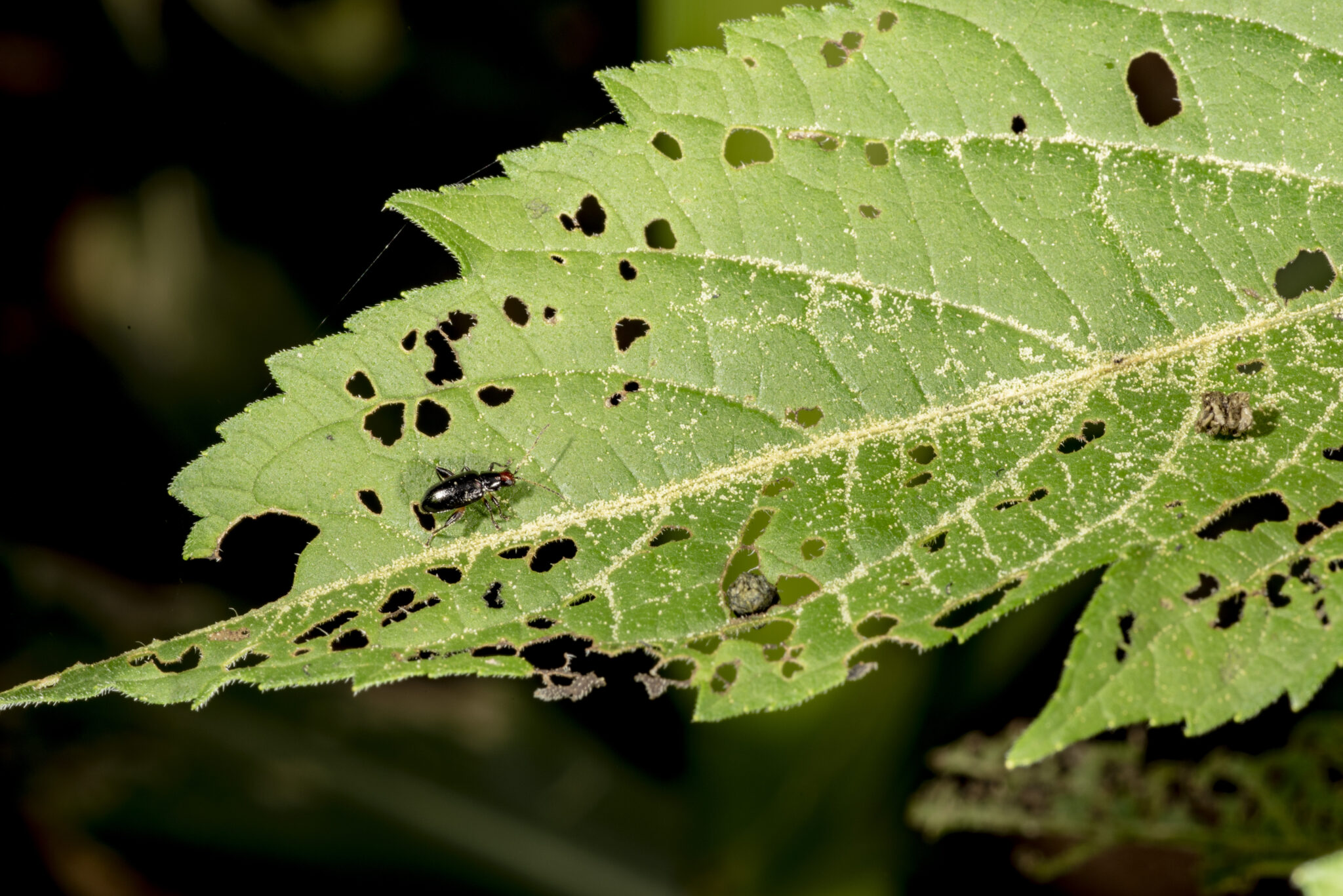
Redheaded flea beetle feeding on giant ragweed leaf dusted with corn pollen. (Photo Credit: John Obermeyer)
Burrower bugs (Sehirus cinctus) are 1/8- to 1/4-inch-long insects with sucking mouthparts. The adults are black with a thin gray line around the edge of the body. The smaller nymphs, or immatures, are red and black. Both stages can be seen crawling over and under the soil and surface residue or accumulating in cracks in the soil surface. Burrower bugs can be abundant in and around no-till soybean and cornfields, as well as gardens and lawns. The species uses its sucking mouthparts to feed on sap from the roots of a wide variety of plants and developing seeds of henbit (a common mint species, think of the purple fields early this spring). There is no indication that burrowing bugs cause any injury to crops but densities of these bright red insects have raised the concern of pest managers and homeowners.
Just when we think things couldn’t get any weirder, we received calls from southern counties concerning “catalpa-like” worms in soybean fields. It’s another classic case of insects left without a food source after herbicide application. Sphinx moth caterpillars (Sphingidae), or better known as hornworms, have been found where purslane had been terminated. The hornworms were quite happy feeding on the weed until it died, then the caterpillars began to scurry about trying to find an alternate food source. The worms were not observed feeding on soybean foliage, but they were so numerous they created quite a concern.
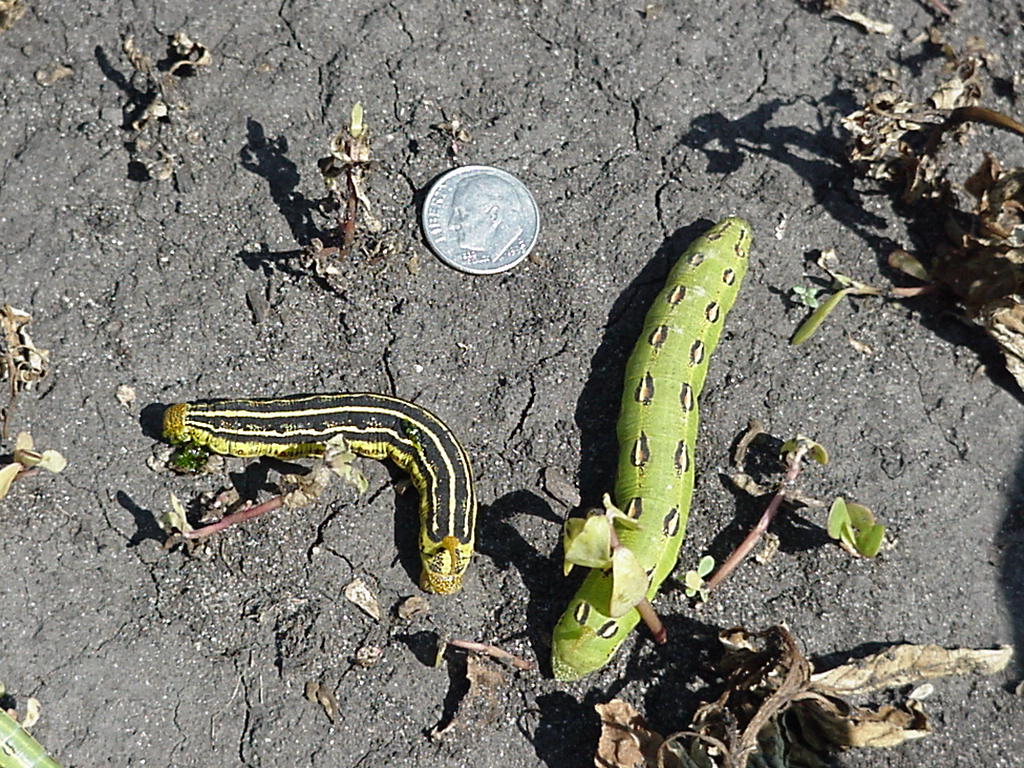
Color and size variation of hornworms shown feeding on remnants of purslane. (Photo Credit: John Obermeyer)
Please keep sharing these eerie mysteries, and happy scouting!


